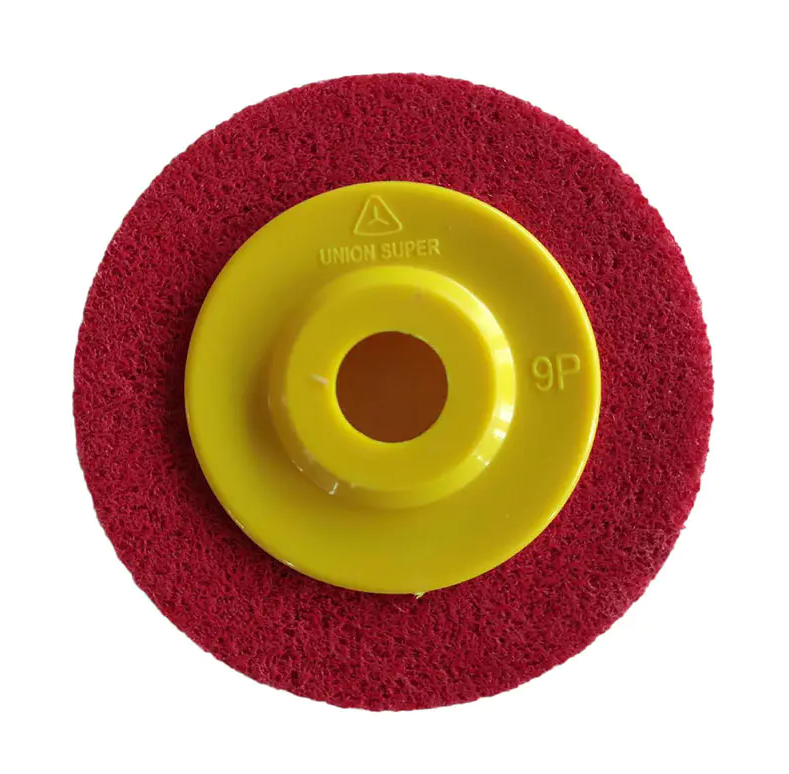Non-Woven Fiber Wheels have become a staple in the surface finishing industry due to their versatility and efficiency. These wheels, made from a blend of synthetic fibers, are designed to provide a consistent and controlled abrasive action. As such, they have been instrumental in reducing material waste during various surface treatments. This article delves into how Non-Woven Fiber Wheels contribute to waste reduction in surface finishing processes.
One of the primary ways Non-Woven Fiber Wheels help in reducing material waste is through their ability to maintain a consistent and even wear pattern. Unlike traditional abrasives that can wear unevenly or become clogged, these wheels offer a more uniform surface contact, which results in a more predictable and controlled material removal process. This uniformity ensures that the material is abraded at a steady rate, reducing the likelihood of over-sanding or uneven finishes that can lead to material waste.
Another advantage of Non-Woven Fiber Wheels is their flexibility. The soft and flexible nature of these wheels allows them to conform to the contours of the workpiece, ensuring that the abrasive action is applied evenly across the entire surface. This conformability minimizes the risk of material being removed from areas where it is not intended, which is a common issue with rigid abrasive tools. This not only conserves material but also maintains the integrity of the workpiece's design.
Non-Woven Fiber Wheels are also known for their durability. These wheels can withstand heavy use without losing their abrasive properties, which means they can be used for longer periods before they need to be replaced. This extended life reduces the frequency of tool changes and the associated waste generated from discarded abrasive materials.
In addition, the open-web structure of Non-Woven Fiber Wheels allows for better dust and debris extraction. This feature is particularly beneficial in reducing waste by preventing the wheels from becoming clogged with debris, which can lead to a less efficient abrasive action and increased material waste. By keeping the wheels clean and free from clogging, the wheels maintain their performance, leading to a more controlled and waste-free surface finishing process.
Moreover, Non-Woven Fiber Wheels are available in various grit sizes and configurations, allowing for a tailored approach to material removal. This customization enables professionals to choose the right wheel for the specific job, ensuring that the material is removed at the optimal rate without unnecessary waste. The ability to fine-tune the abrasive process in this way is a significant factor in minimizing material loss.
Furthermore, the use of Non-Woven Fiber Wheels can lead to a reduction in the number of steps required in the surface finishing process. Their ability to provide a high-quality finish in fewer passes means that less material is removed overall, and fewer materials are wasted in the process. This streamlined approach to surface treatment not only conserves resources but also increases productivity and efficiency.
In conclusion, Non-Woven Fiber Wheels play a critical role in reducing material waste during surface finishing processes. Their consistent wear, flexibility, durability, and effective debris management contribute to a more controlled and efficient material removal process. By leveraging these characteristics, industries can minimize waste, conserve resources, and maintain the quality of their products. As the demand for sustainable practices grows, the use of Non-Woven Fiber Wheels in surface treatment will continue to be an essential tool in achieving these goals.
https://www.automaticmachinefactory.com/product/grinding-tools-and-abrasives-division/nonwoven-fiber-wheel/
